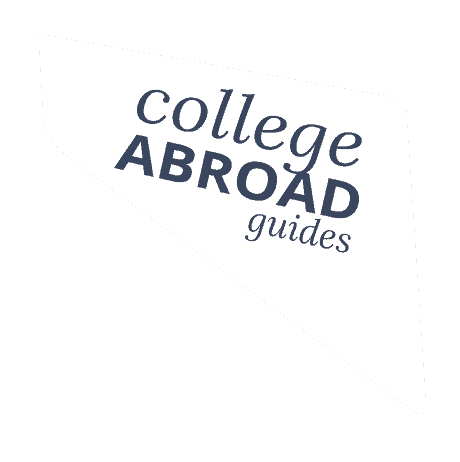A Campus in the Heart of Dublin: University College Dublin (UCD)

- Originally published
- Last updated on August 14th, 2023 at 11:57 pm
Table of Contents
University College Dublin calls itself Ireland’s global university, a welcoming place for international UCD students, and a capital city gem with a self-contained campus. But what is University College Dublin like? Actually, like? So we gathered up some basic stats, talked to students, and compared some of its offerings against other campuses international students might be considering, like Trinity College Dublin or Dublin City University.
What makes UCD unique? If you’re looking for an American-style campus and a degree with an outstanding international reputation and especially if you’re looking at occupational courses like business or sports management, UCD may be the right spot for you.
University Collge Dublin Basics
Degrees: BA, BSc BA, BAgrSc, BComm
Majors: 6 colleges and schools including Arts & Humanities; Business; Engineering & Architecture; Health and Agricultural Sciences; Science; and Social Sciences & Law. Undergraduate business is the best in Ireland. There are multiple majors in the handful of schools within each college—for example, within the College of Science is the UCD School of Earth Sciences where you’ll find an undergraduate geology degree. There’s a popular undergraduate computer science with a data science BSc. One non-traditional option is the liberal arts & sciences track, where you won’t have to choose a degree path for a year or even two. Majors cover a broad swatch of options including Welsh, Irish folklore, genetics, and theoretical physics. The archaeology & geology pairing is also unique.
You can complete a joint major combination (not all combinations are available)
Location: Belfield, Dublin
Cost for out-of-EU: €14,850 for Liberal arts, Arts, and Business/Law. €20,000 for Engineering/Architecture and Science programs.
On-campus housing cost: €7,308-€13,500 depending on residence (For September-May)
FAFSA Funds: Yes
Abroad from abroad: Yes! Hundreds of study abroad options for all programs through Erasmus in Europe and multiple partnerships abroad outside Europe.
Student body: 34,000 total students (8,500 international, about 25%)
Five adjectives: sporty, large, suburban, professional, social
Abroad in Dublin
Belfield’s UCD campus used to occupy St. Stephen’s Green near the city center of Dublin; now, it’s about a 20-minute bike ride south. Buses zip along the suburban thoroughfare for easy access downtown, and students should check out the sights of the centre city since it’s a young, lively town that likely drew you to UCD in the first place.
It will take you a solid hour to walk up to the city, where just south of St. Stephen’s Green, you’ll find a quiet oasis called Iveagh Gardens. On the north side of the park, you’ll stumble into Grafton Street, where you can pick up anything you’ve forgotten from home. This pedestrian-only shopping thoroughfare delivers pizza that far outstrips the campus bar. It’s famous for street performers in a city where music has always been close to the history and hearts of the locals. If you’re from the English department, try the literary pub crawl, where you can soak up Dublin’s writerly past along with some Guinness.
I asked friends and relatives who had studied in Ireland about UCD. I was so worried that I wouldn’t be able to afford the cost of living in Dublin. And Dublin is very expensive. But get out when you can. Have drinks with roommates. Go sit in the park. Things don’t have to be expensive to be memorable.
On the north side of the river, the famed General Post Office is worth a visit. It played a fundamental part in the Easter Rising that led to an independent Ireland while the British had their backs turned during WWI. UCD houses the most complete collection of archival materials from the rebellion, so a trip to the site might make a fine afternoon trip for history and Irish studies students.
Think about how much Ireland has evolved since then, while you order food at Dublin’s Brazilian pub. Then visit the table tennis club in its basement, Wig Wam, and play a game over vegan nachos and under a disco ball.
UCD’s Belfield Campus (and Beyond)
When you make it back south to UCD, you’ll find that the surrounding area is sleepy, but hit Boland’s Pub in Stillmorgan for a cozy pint and game of pool while betting you can name the actors in the vintage headshots adorning the walls.
For weekend getaways, the nearby campus is Dún Laoghaire harbor, where you can head out for a sunrise stand-up paddle tour and enjoy the Atlantic coast. Just a stone’s skip south, you’ll find a spot where daredevil students have made their mark for generations.
Called “the 40 foot,” you can plunge into the sea at Sandy Cove at what used to be a “gentlemen’s only” bathing area. Women: stride past the unwelcoming signs and give it a go alongside the guys. It’s cold even before classes get started in August, but if you’re hardy, consider joining the Christmas Day jump and win a lifetime of bragging rights.
To get farther into nature, the Dublin mountains south of town grow larger as you head south. They’re called the Wicklows, and they’re perfect for hiking and checking out the ruins of a nearby miner’s village. It was once a place for Irish rebels to hide from the British army.
The hills are now a national park, and their protected zigzags offer the best views Ireland has to offer, including one unforgettable panorama of the city of Dublin.
Less rigorous routes can take you to a wealth of national gems: St. Kevin’s monastery, Powerscourt Waterfall, and Glendalough Lake.
Student Life on Campus at University College Dublin
University College Dublin was once closer to the city center. Formed as the first Catholic University in Ireland, it occupied St. Stephen’s Green before outgrowing its digs and relocating to the Belfield campus and further expanding to Blackrock where the business college sits. The result is that this planned, sprawling modern campus covers hundreds of acres and houses tens of thousands of students.
The Belfield campus is tree-lined. There’s a sculpture path. Lakes with their resident geese and wooded paths through campus offer a respite from crowded student life.
What I liked about UCD is how big the campus is. Much larger than my hometown campus in the US. There’s so much to do.
However, the campus itself is less than historical, made to accommodate world-class libraries, labs, and faculties. So many white squares! So much concrete! We jest. You’ll also find it’s so new and functional, with no classroom ghosts.
Students come to UCD for the education rather than the atmosphere, which is something to remember when the q-tip-like cement water tower (a notable architectural contribution to the campus scene) isn’t inspiring you to get out of bed on a cold, dark, rainy November morning.
Housing on Campus at UCD
Due to its sheer size, there’s student accommodation aplenty at UCD, with 8 different residences. See what we mean about the benefits of the campus being new and large? It pays off in Dublin’s housing market.
While there are lots of rooms, it’s a complicated process to apply, with a randomized wait list for students to choose their preference (aim for a private bathroom).
Students who are offered any housing on campus find it tough to refuse.
The location can’t be beat and you’ll save on the bus ride, too.
However, students are increasingly concerned that prices are unreasonable. Many use various student housing apps like daft.ie or rent.ie to find privately-owned alternatives. Some of the housing is new and while not exactly cozy, it’s clean, and high quality, with wood-framed windows, security, and all the comforts you’d expect. Speaking of security, Dublin in general, and the UCD campus specifically, feel safe compared to almost anywhere on earth. Female students from the US Say they feel safe walking the town at night, returning to their dorms alone, and navigating their way to parties, on buses, and to class. in fact, Dublin ties for 3rd place as the safest European capital by some estimates.
Another drawback of life on a suburban campus is that you’ll have to find a way to meet your needs outside the bubble of student life. It’s a 30-minute walk to the nearest Tesco for groceries, and strolling to the center of Dublin will take you a full hour. That reality can mean overpaying for ramen at the student center out of convenience.
There’s not really a meal/catered food option for students like the US would have. Students have kitchens and are responsible for their own cooking with the exception of Roebuck castle where students do have the option of a meal plan. There are sub shops, coffee stands, and cafes around campus that most students use for quick bites to eat. The UCD food hall is also a big hit with students. The food hall is in the main building on campus and has 4-5 different places to get food from 7 days a week as well as Centra, which is the grocery store on campus.
You’ll also find it’s just easier to hang at the single campus pub, the Clubhouse Bar, instead of heading to Dublin’s many iconic venues. More than one student told us they center their social life around the Clubhouse because it’s just easy.
Many students looking for a suburban campus life don’t mind.
There’s plenty to do right on campus, like the 130+ student societies that you can join to make the most of your free time, alongside 54 sports clubs from trampoline to Gaelic football.
The campus boasts world-class sports facilities, so if you haven’t tried your hand at squash or dived into the Olympic-sized swimming pool, you really haven’t gotten your tuition’s worth yet.
UCD is especially geared toward its sporty applicants. With its large, planned campus and multiple sports societies, a BSc in Sports Management, and even scholarship students, UCD is a competitive student’s dream.
Its facilities are A1, and beginners as well as seasoned teammates will find they can participate in sports year-round, including taking a crack at the school’s 98-foot climbing wall.
What’s University College Dublin Like for Academics?
The Times and US News ranking awards in Ireland go to Trinity College Dublin. But the rivalry between James Joyce’s alma mater and Oscar Wilde’s is strong. However, the universities are distinct academically, with many different fields available here at Ireland’s largest university that aren’t on the map at the more diminutive Trinity. Veterinary science? UCD is your jam. Architecture? Head to UCD. And while Trinity offers an Irish language major, at UCD you can dive into Irish studies, including Irish history, Celtic civilization, and folklore.
Their differences should make it easier to choose between Irish academic powerhouse universities.
UCD has a reputation for being geared toward getting graduates jobs rather than launching them toward doctoral programs. And while that’s not entirely true, UCD does have differing programs like business and commerce. There’s even a yearlong internship program that allows communications alongside And the career center offers one-on-one interview training to help you land the internship of your dreams.
Its international focus is a core value of the campus, where not only students, but a sizeable percentage of the faculty comes from abroad. UCD also has global centers overseas, where regional reps help spread the word from Singapore to Dubai. With this emphasis comes criticism that UCD focuses on international tuition dollars rather than outstanding teaching and small classes. And it’s true that research is a priority here.
But it’s also true that American students and Irish students – as well as students from all over the globe – mix better here than in some universities. Students also think national and international students recognise the benefit of getting to know one another. UCD staff doubtlessly help emphasize the global nature of a UCD education, and students here not only get a good mix of international classmates, but they’re also likely to get a network outside of Ireland that lasts the rest of their lives.
The UCD global ambassadors team does a phenomenal job at making sure international students feel at home at UCD. They had a showing of the Super Bowl, celebrated all of the holidays, and had events specifically for students who were studying abroad.
However, there are also some stellar academic services for undergraduate students. First off, there are peer mentors assigned to incoming students to help answer all your basic questions about life at UCD. Additional help is available in the international center to help with immigration and cultural concerns. Student advisors are program-based and support students throughout their college careers, from academic concerns to self-care.
Breaking Down the Workload at UCD
You’ll want the support.
Irish universities do not grade by the same standards as American ones, and while the mix of lectures, hour-long classes, and small seminars/tutorials for student discussion will look familiar, the grading system will not. It may look like a standard GPA scale, but in the world of UCD, a 40% is a pass and a 70% is an A.
Grade calculators can help you determine where you stand ahead of exams, but the main point is not to panic and cry when you get a 70%. You’re actually doing quite well.
A final academic distinction at UCD is the inclusion of interdisciplinary modules (think classes) that allow you to pick some supplementary coursework. You’ll choose an area that aligns with your degree or lets you explore areas you’re passionate about. Elective modules include more practical skills not normally featured in the academic canon. For instance, choose something like “travel writing” or “the art of living well.” But you could also choose electives like “Medical Geology” and “Prepare for your future career,” where you’ll learn to ace an interview and how to communicate for professional development.
After four years, you’ll graduate with a combination of classes and electives at all the levels required by your program.
Thinking of Applying? Here’s What You’ll Need
Requirements differ by program, with many expecting SAT scores over 1850 (ACT 25/26). The minimum GPA is 3.0 with 1500 SAT (22 ACT). Be prepared to also upload a personal statement, two letters of recommendation, and AP scores if applicable. You can apply directly at the school’s application portal. Applications are open from November 1 to March 1 for priority admission, or July 31 for all admissions. Expect a speedy 2-4 week decision for this selective school with a 20-30% admission rate.
There are multiple scholarships for which U.S. students are eligible. Admitted students are considered for International Student Scholarships automatically (score!) but there are other scholarships you can apply for once admitted, including several for budding business students, engineering & architecture students, and future American leaders.
Check out the Rest of Ireland
University College Dublin is one of a number of world-class schools, and that’s just in Dublin. Get the basics on Irish higher education, then check out other schools. Is Dublin too crowded? UCD out of your comfort zone? Explore Maynooth University, a short train ride away. Your ideal education is out there, and we’ve talked to students at every Irish university to bring you the inside scoop on which one is perfect for you.
Related Posts

Jessica Share
Jessica is the writer, Ph.D., and mom-of-an-abroad-student-in-the-UK at the helm of College Abroad Guides. When she's not asking college students where the coolest place to hang out in their city is, she's figuring out how she can make $60 imported Greek oregano potato chips and £50 British bacon potato chips appear on her doorstep for the cost of a local bag of Lay's.





